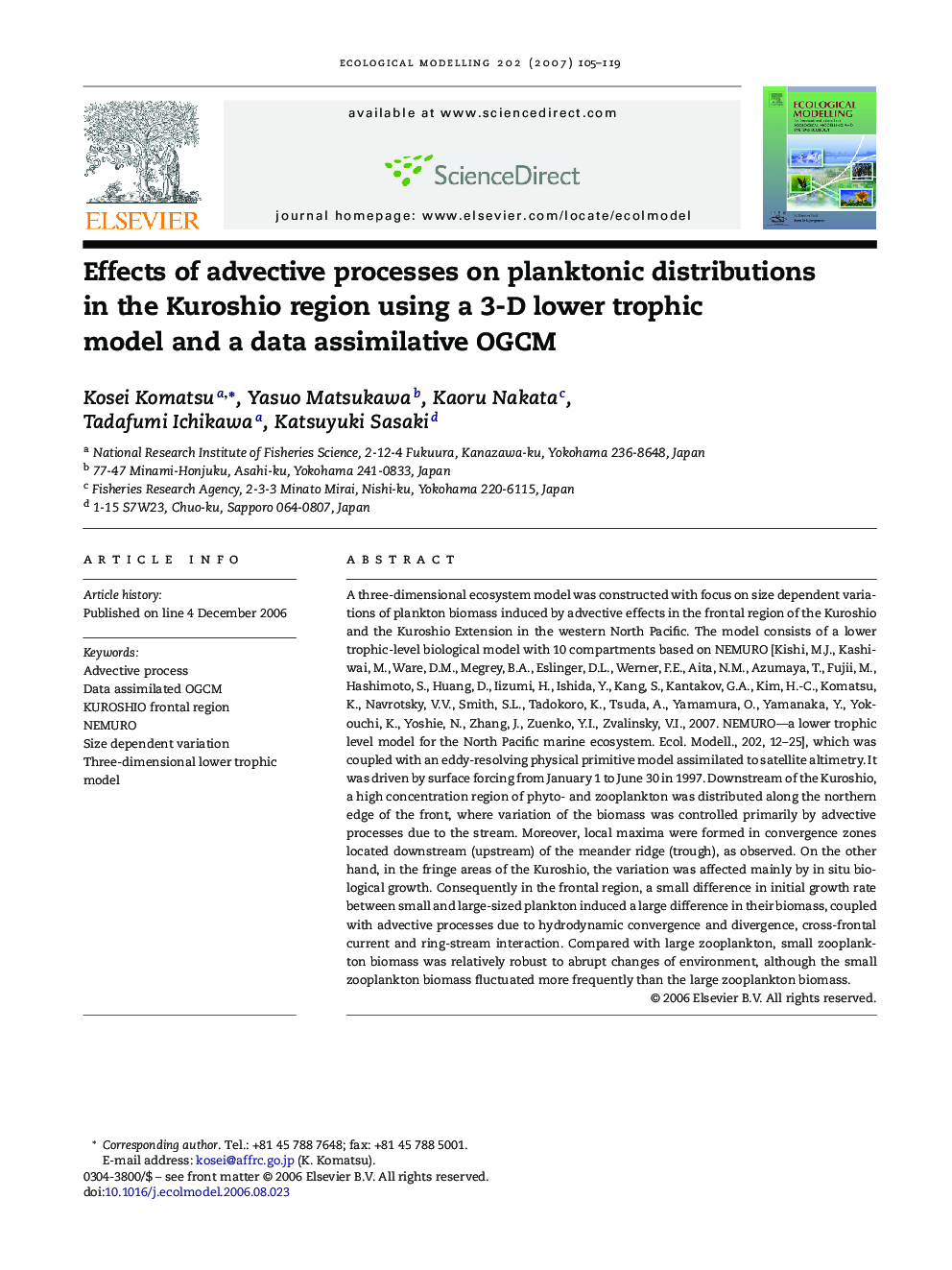| Article ID | Journal | Published Year | Pages | File Type |
|---|---|---|---|---|
| 4378738 | Ecological Modelling | 2007 | 15 Pages |
A three-dimensional ecosystem model was constructed with focus on size dependent variations of plankton biomass induced by advective effects in the frontal region of the Kuroshio and the Kuroshio Extension in the western North Pacific. The model consists of a lower trophic-level biological model with 10 compartments based on NEMURO [Kishi, M.J., Kashiwai, M., Ware, D.M., Megrey, B.A., Eslinger, D.L., Werner, F.E., Aita, N.M., Azumaya, T., Fujii, M., Hashimoto, S., Huang, D., Iizumi, H., Ishida, Y., Kang, S., Kantakov, G.A., Kim, H.-C., Komatsu, K., Navrotsky, V.V., Smith, S.L., Tadokoro, K., Tsuda, A., Yamamura, O., Yamanaka, Y., Yokouchi, K., Yoshie, N., Zhang, J., Zuenko, Y.I., Zvalinsky, V.I., 2007. NEMURO—a lower trophic level model for the North Pacific marine ecosystem. Ecol. Modell., 202, 12–25], which was coupled with an eddy-resolving physical primitive model assimilated to satellite altimetry. It was driven by surface forcing from January 1 to June 30 in 1997. Downstream of the Kuroshio, a high concentration region of phyto- and zooplankton was distributed along the northern edge of the front, where variation of the biomass was controlled primarily by advective processes due to the stream. Moreover, local maxima were formed in convergence zones located downstream (upstream) of the meander ridge (trough), as observed. On the other hand, in the fringe areas of the Kuroshio, the variation was affected mainly by in situ biological growth. Consequently in the frontal region, a small difference in initial growth rate between small and large-sized plankton induced a large difference in their biomass, coupled with advective processes due to hydrodynamic convergence and divergence, cross-frontal current and ring-stream interaction. Compared with large zooplankton, small zooplankton biomass was relatively robust to abrupt changes of environment, although the small zooplankton biomass fluctuated more frequently than the large zooplankton biomass.
